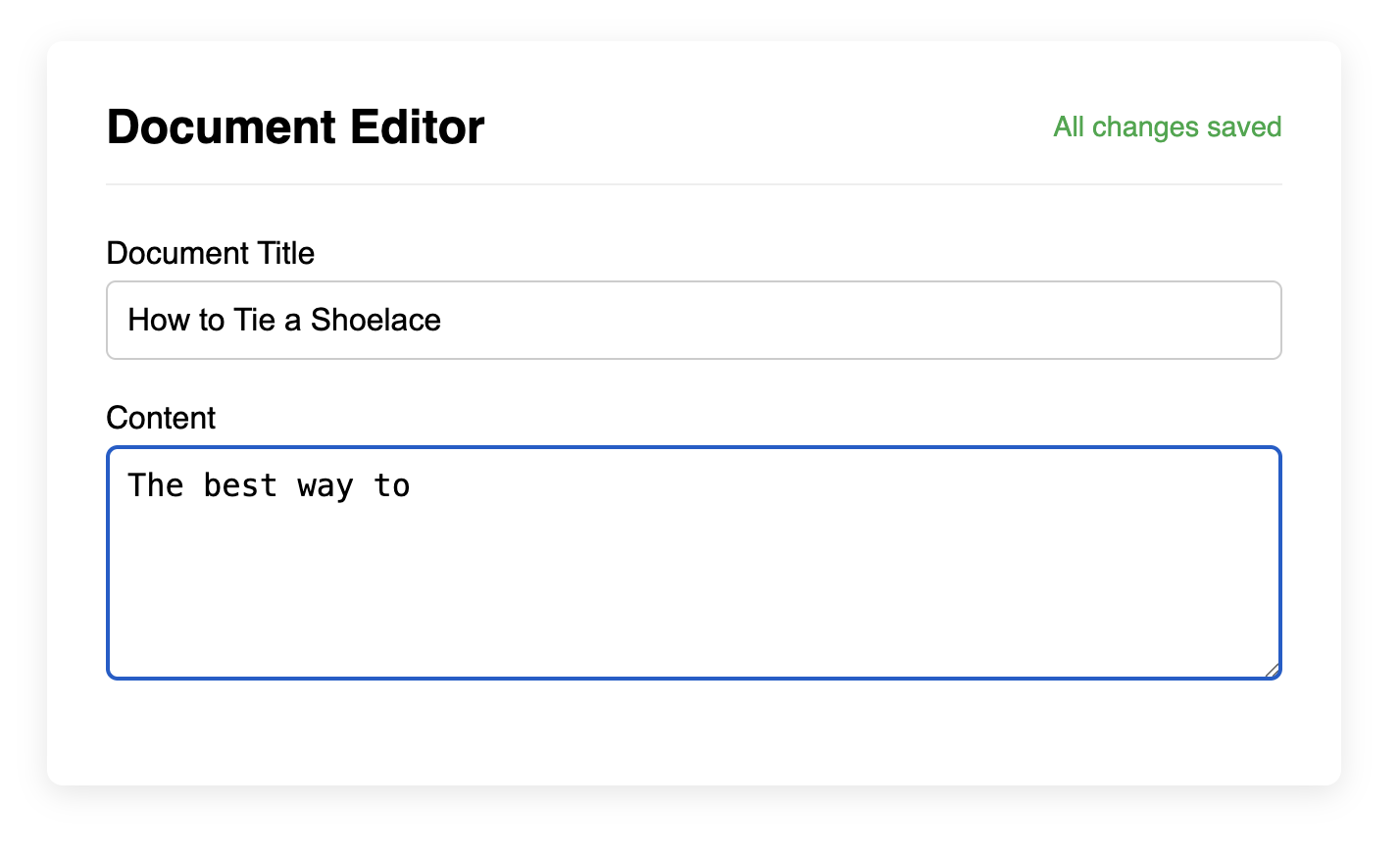Auto-Saving Form Template
Give users peace of mind with this modern form that automatically saves their changes as they type.
This template provides the front-end user interface for an auto-saving form, complete with a dynamic status indicator that provides clear feedback about the saving process.

About this Auto-Saving Form
Modern web applications have conditioned users to expect their work to be saved automatically. This template demonstrates the front-end part of that experience. Instead of a separate "Submit" button, this form has a status indicator that reflects the state of the user's data.
The JavaScript is designed to simulate the real-world process:
- It listens for an
inputevent on any form field. - When the user types, it immediately changes the status indicator to "Saving..." and applies a corresponding CSS class.
- It uses a
setTimeoutto simulate the time it would take to send the data to a server and get a response (e.g., 1.5 seconds). - After the simulated delay, it updates the status indicator to "All changes saved" with a success style. A timer is used to clear any previous save attempts, a technique known as "debouncing".
This provides a reassuring and professional user experience, preventing data loss and removing the need for users to manually click "Save".
To use this form in a real-world application, you would need to replace the simulated part with an actual AJAX/Fetch call.
Features
- Live Status Indicator: Clearly communicates the state of the data (Unsaved, Saving, Saved).
- Modern UX: Mimics the behavior of popular applications like Google Docs, Trello, or Notion.
- Debouncing Logic: Includes a basic "debouncing" mechanism to prevent firing off a save request on every single keystroke.
- Simulated Asynchronous Behavior: A great educational tool for demonstrating how to handle the UI during an asynchronous server request.
Dependencies
This template provides the front-end user interface only. To make it fully functional, the JavaScript would need to be modified to send the form data to a server using a technology like Fetch API or Axios instead of the simulated setTimeout.
Code
Here's the full code for the auto-saving form: